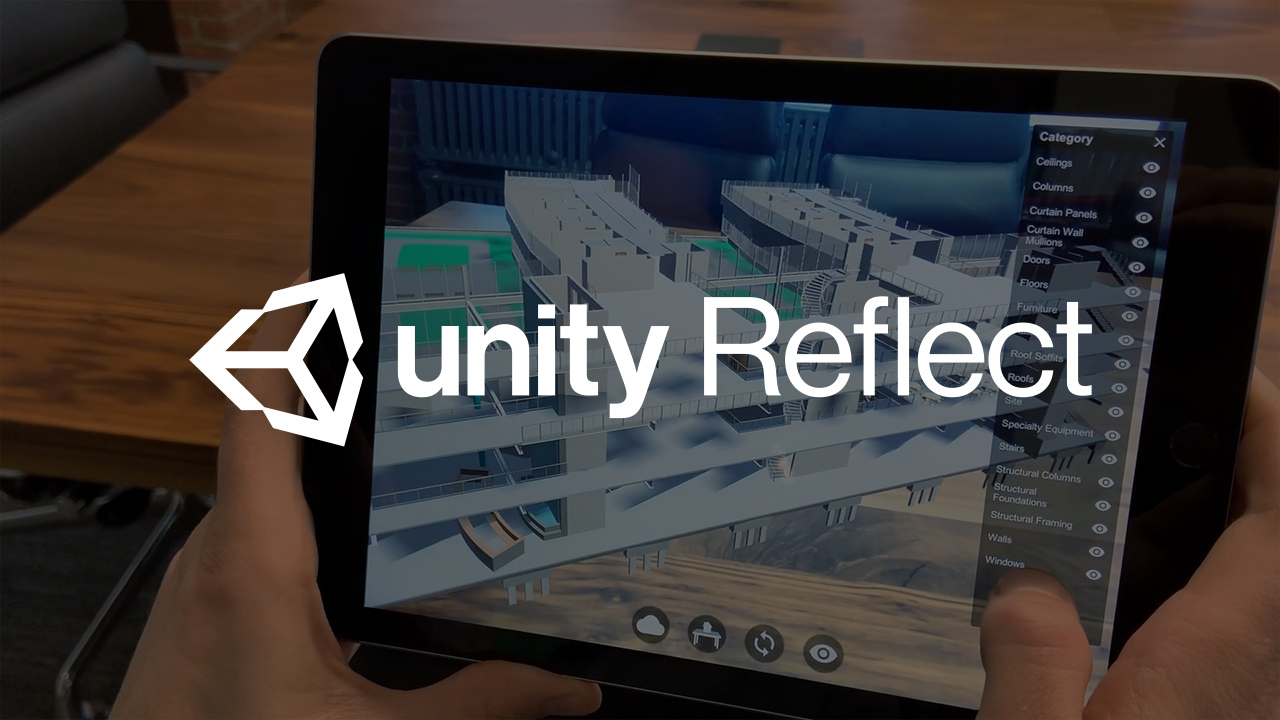
In Augmented Reality and Virtual Reality News
December 1, 2020 – Unity, a leading platform for creating and operating real-time 3D content, has announced another step toward what it calls ‘holistic interoperability’ with Autodesk, thanks to the integration of Unity Reflect—a real-time design review and coordination solution that connects all project members on one immersive, collaborative, real-time platform regardless of device, model size, or geographic-location—with the Autodesk BIM 360 cloud-based design & construction management software platform.
Through this integration, designers, engineers, owners and other project stakeholders using Unity Reflect can now collaborate on one immersive, collaborative, real-time platform with the added ability to conduct on-site 1:1 augmented reality (AR) for visualizing variance and design to build intent. According to Unity, this is a result of a three year collaboration between the company and Autodesk that started in October 2017.
Unity Reflect also offers cloud hosting to all Unity Reflect users, enabling them to host projects on-premise or in the cloud, push data to mobile devices, and share models with users outside of their network.
“Unity Reflect makes it truly simple for designers to collaborate with owners, occupants and contractors around an interactive BIM model that can be experienced in real time, at human scale, by multiple teams at the same time, in a way that is highly intuitive and realistic,” said Julien Faure, Vice President, Verticals at Unity. “Together with Autodesk, we bring designs to life with BIM-connected virtual reality (VR), to make it easier for all project collaborators to more deeply explore design options, solve complex engineering issues, and plan construction execution.”
“From clash detection to real-time virtual walkthroughs, real-time 3D workflows are transforming how construction firms operate,” said James Cook, Head of Integrations at Autodesk Construction Solutions. “By using models from BIM 360 within Unity Reflect, construction teams can know these data-rich workflows always incorporate the most up-to-date information.”
Since it was first announced, Unity Reflect has grown to support a suite of Autodesk products including Revit, Navisworks, and now BIM 360, which is part of Autodesk Construction Cloud, while also enabling Autodesk users to access real-time 3D experiences on a range of devices in AR and VR to bridge the gap between design and construction.
Through this latest integration with BIM 360 the Unity Reflect platform has increased the number of ways in which it can connect all project stakeholders, regardless of platform/device, model size, or geo-location to create real-time collaborative environments, helping to facilitate faster, more impactful decision-making throughout the entire building/infrastructure lifecycle, according to Unity.
Fore more information on the Unity Reflect platform, please click here.
Image credit: Unity
About the author
Sam is the Founder and Managing Editor of Auganix. With a background in research and report writing, he has been covering XR industry news for the past seven years.
